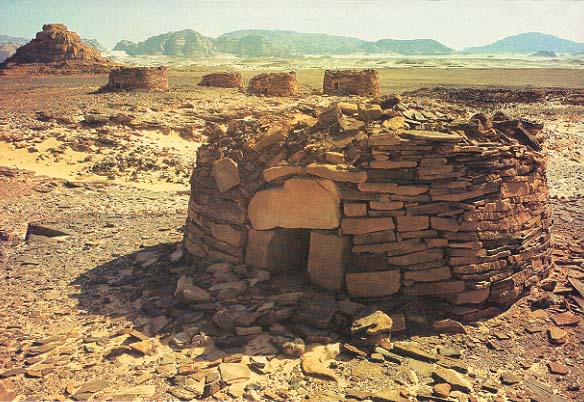Image Details

David Harris
Round burial houses, called nawamis by the Bedouin, dot the southern and eastern Sinai landscape. In the namus at left, discovered at Wadi Sawawin, a woman was buried in the fourth millennium B.C. wearing wrist and ankle bracelets (see photograph).
The walls of each namus, about seven feet high, originally sloped inward to form a beehive shape. Many have been found with their roofs intact. Bedouin legend holds that these oddly shaped structures were built by the Israelites during their wanderings in the desert to protect themselves from a plague of nawamis (Arabic for mosquitoes) set upon them by heaven. The nawamis stand today as the oldest intact roofed structures in the world.
